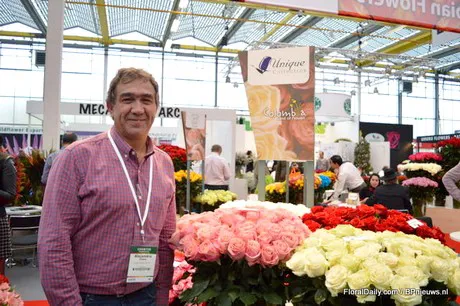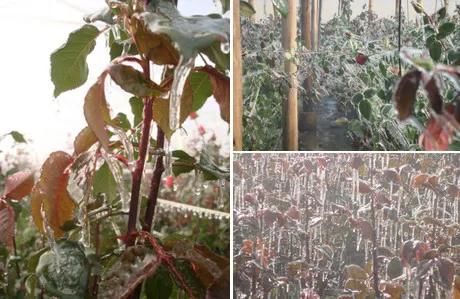
Alejandro Llano at the IFTF in Vijfhuizen, the Netherlands.
Early frost
In Colombia, frosts are usually expected in January or February. However, due to El Niño it started to freeze earlier. "Over the last weeks, we've already had some frosts during nighttime." According to Llano, this is a result of the long Colombian summer. "We had a very long summer, almost the second part of the year. As a result, the days are hot, between 20 to 24 Celsius, and the nights are cold, between minus 5 to 7 Celsius. In the coming months, as el Niño is expected to strengthen further this might become even worse."

Some pictures of the last frosts in 2010 at the Unique Collection farm.
Negative effects production
These early frosts will affect the rose production and worries Llano as the Valentine's Day production is in full swing at this time of the year. "As the nights are cold, the production might become less and will be delayed. Then, the stems will be harvested 25 to 35 days later. In the worst-case scenario, if the nights get too cold, it might even kill the entire production," says Llano
Preventative measures
The Colombian greenhouse of Unique Collection Farms is not equipped with heaters. "No one here in Bogota has heaters," he says. Therefore, Llano has to use other methods to decrease the impact of the frost on the plants. According to Llano they use two methods. "The first method is to flood the soil, which will increases the caloric capacity and thermal conductivity of the soil. The second method is spaying the plants with water. When the water freezes on the plant, it will keep them warmer; the temperature does not go below 1 degrees Celcius. These methods are reliable and have given us good results in the past. However, when it gets too cold, these methods will not work anymore," he says.
For more information
Unique Collection
Alejandro Llano
Email: [email protected]
www.uniquecollection.farm
